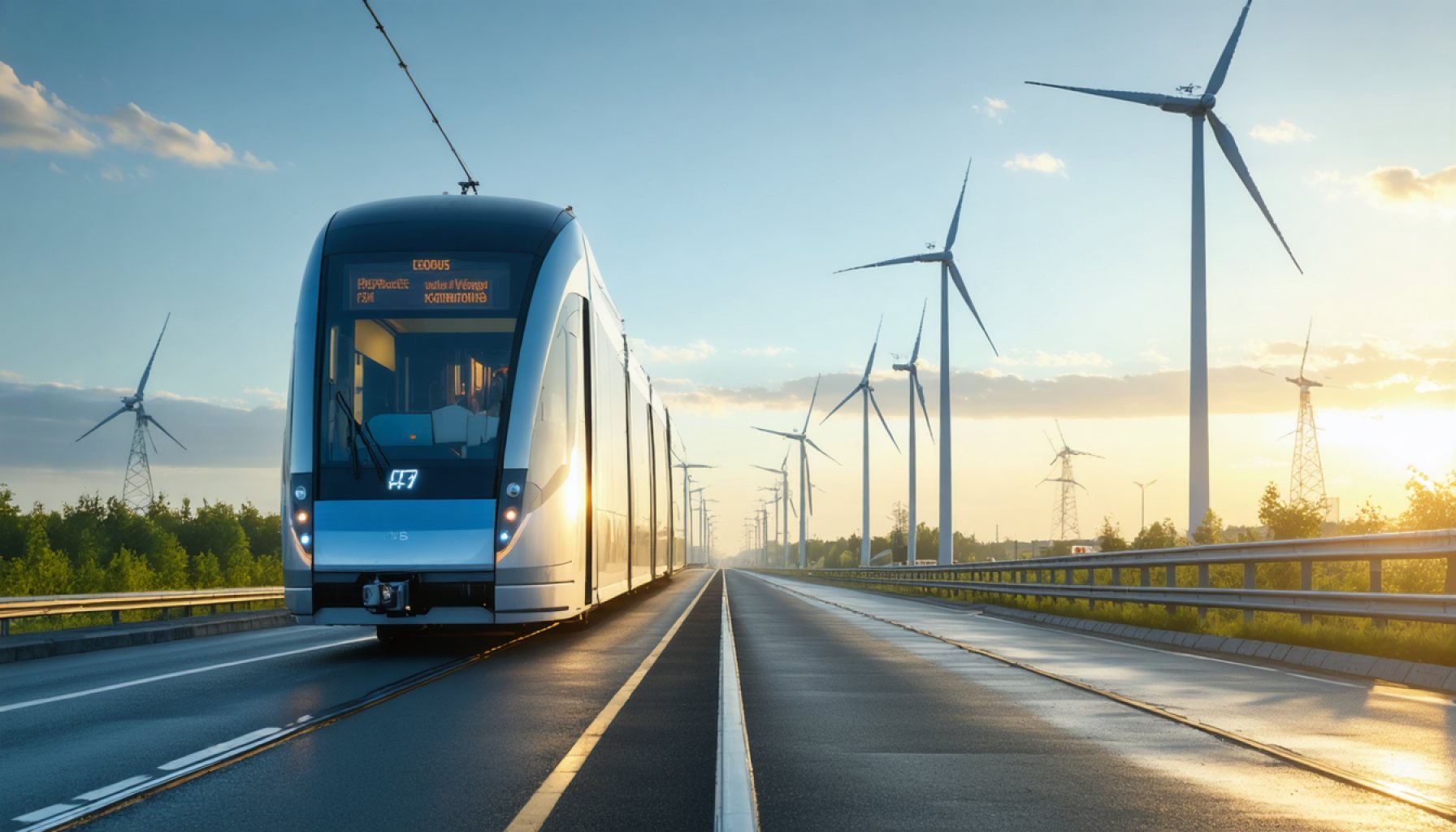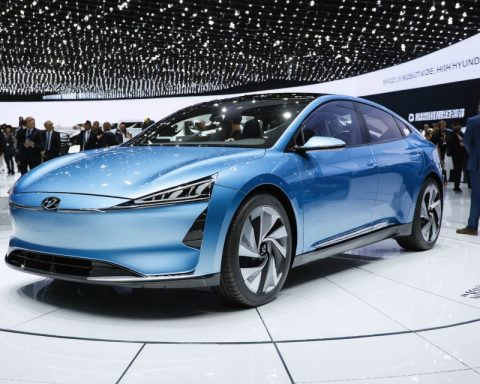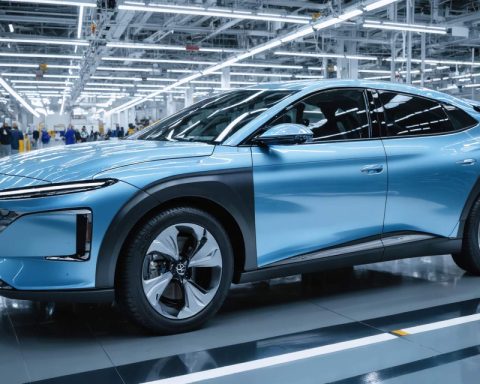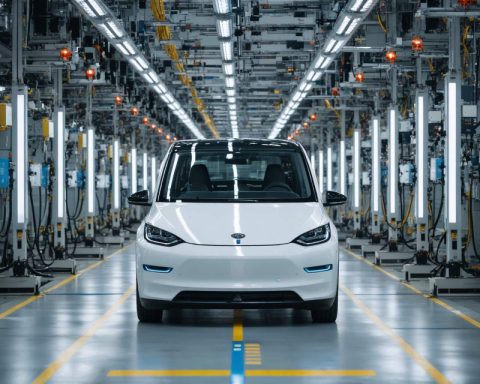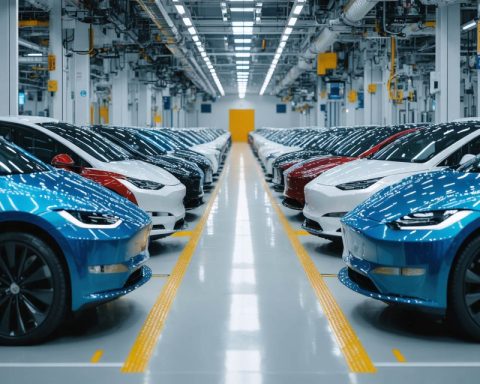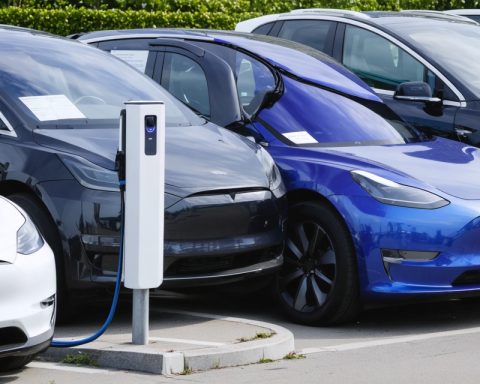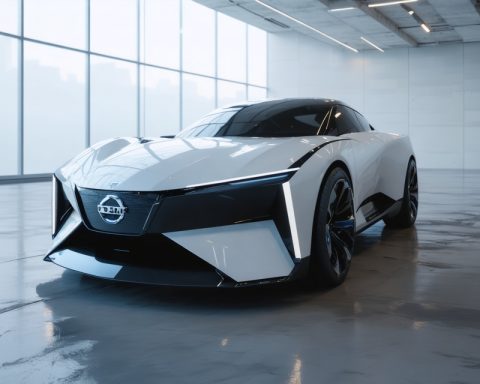- Hydrogen is emerging as a potential solution for Europe’s public transport challenges, despite skepticism from 93% of experts regarding its current feasibility compared to battery-electric options.
- 89% of industry experts believe hydrogen could address electric fleet issues such as weight, range, and grid dependency.
- A significant portion of respondents aims to expand hydrogen-powered fleets within the next decade.
- Current hydrogen infrastructure is limited, prompting innovative ideas like decentralised electrolysis to bridge the gap.
- Safety concerns related to hydrogen storage persist, highlighting the need for localized, small-scale solutions.
- Collaboration with small-scale electrolyser developers is seen as vital for promoting hydrogen’s role in achieving net-zero goals.
- Hydrogen offers a pathway for emission reductions and the revitalization of public transit systems in Europe.
A quiet revolution is brewing on Europe’s public transport frontier, where decision-makers are mulling an intriguing dilemma: can hydrogen fuel each passenger’s journey toward a sustainaable future? Across rain-drenched streets in London, bustling tramlines in Berlin, and scenic Italian bus routes, hydrogen dares to challenge the status quo.
Survey data unravels a narrative of cautious optimism amidst a tangled web of challenges, with 93% of Europe’s public transport experts expressing doubts about hydrogen’s feasibility in current and potential battery-electric transformations. Yet a decisive 89% pin their hopes on hydrogen’s potential to counteract the familiar woes of electric fleets—pesky weight issues, insufficient range, and notorious grid strains.
Hydrogen, with its promise of substantial emission cuts, beckons operators to embrace change. From fogged-over windows of three-quarters of surveyed respondents’ buses comes a discernible drive to expand hydrogen-powered fleets within the next decade.
Yet the journey is riddled with obstacles. Only a mere fraction enjoys access to permanent fueling infrastructure, exposing a stark infrastructure gap. Creative minds propose that decentralised electrolysis might sidestep these barriers, fostering closer distances between power generation facilities and the vibrant cities they seek to reimagine. Enthusiasm about these prospects ripples through conversations, hinting at trial runs devoid of centralized dependency.
Safety concerns cloud the prospects—a sizeable portion of respondents voice hesitations about hydrogen storage. In whispered boardroom meetings and vibrant public forums, discussions of smaller, localised solutions gain traction. As electric grids falter and hydrogen aspirations grow, these talks kindle a realisation: the ingenuity to outmaneuver traditional hurdles is critical.
European public transport stakeholders sense that partnerships with agile developers of small-scale electrolysers could cast a new light on this path forward, providing tangible proof of hydrogen’s indispensability in the quest for net-zero. Here, innovation finds its pace—a world where hydrogen refuels dreams and whisks Europe toward a new era of transit.
Can Hydrogen Revolutionize Europe’s Public Transport System?
How-To Steps & Life Hacks
Implementing Hydrogen in Public Transport:
1. Assess Infrastructure Needs:
Analyze current refueling stations and identify locations for hydrogen fueling infrastructure. Collaborate with local governments and private partners for land acquisition.
2. Pilot Programs:
Launch pilot programs in select routes to gather data on hydrogen fuel efficiency and logistics. Focus on areas with high pollution for a greater environmental impact.
3. Decentralized Electrolysis:
Invest in localized hydrogen production through electrolysis to minimize transport costs and reliance on central power plants.
4. Public-Private Partnerships:
Engage with technology firms and infrastructure providers to share costs and risks in developing hydrogen fueling stations.
5. Educate and Train Workforce:
Provide training for public transport operators and maintenance crews in hydrogen safety and technology handling.
Real-World Use Cases
Example Projects:
– Aberdeen, Scotland: The city has one of Europe’s largest hydrogen bus fleets, fostering insights into cost-efficiency and operational challenges.
– Frankfurt, Germany: Initiated a hydrogen train service, giving European examples of reducing carbon footprints on rails.
Market Forecasts & Industry Trends
– Market Growth:
The global hydrogen fuel cell market is expected to reach $46.89 billion by 2026, bolstered by sustainable initiatives and eco-friendly regulations (source: Markets and Markets).
– Trend Insight:
Increasing investments in hydrogen-powered buses and trains across Europe denote a clear industry shift toward cleaner alternatives.
Reviews & Comparisons
Hydrogen vs. Battery Electric Buses:
– Range & Efficiency:
Hydrogen buses generally have longer ranges and faster refueling times compared to battery electric buses which require extended charging durations.
– Cost:
Initial costs for hydrogen buses and infrastructure are higher, yet operational benefits and decreasing hydrogen costs could mitigate this over time.
Controversies & Limitations
– Infrastructure Deficiency:
A lack of refueling stations remains a cardinal issue, slowing down broader adoption.
– Safety Concerns:
Hydrogen storage is a debated topic due to potential hazards, demanding rigorous safety protocols.
Features, Specs & Pricing
– Fuel Cell System:
Hydrogen buses are equipped with advanced fuel cell systems capable of generating electricity with substantial energy efficiency.
– Cost Example:
A hydrogen-powered bus can cost between $500,000-$650,000, comparatively higher than diesel buses.
Security & Sustainability
– Safety Measures:
Adoption of international safety standards, such as from ISO, helps mitigate risks associated with hydrogen usage.
– Environmental Impact:
Hydrogen transport systems dramatically reduce greenhouse emissions and reliance on fossil fuels.
Insights & Predictions
– Transition Leading to 2030:
By 2030, hydrogen could dominate areas with significant electric grid issues, thanks to decentralized solutions.
– Competitive Edge:
Public transport systems adopting early hydrogen innovations are likely to gain advantageous positions in environmental compliance.
Tutorials & Compatibility
For instructional guides on incorporating hydrogen technologies into existing transport frameworks, industry workshops and courses can be found at institutions like the Hydrogen Europe platform.
Pros & Cons Overview
Pros:
– Zero emissions at point-of-use
– Quick refueling times
– Potential for long range
Cons:
– High initial costs
– Limited infrastructure
– Safety considerations
Actionable Recommendations
– Conduct a feasibility analysis for deploying hydrogen in your local transport system.
– Engage stakeholders early to build a coalition among local authorities and businesses.
– Explore agile partnerships with emerging hydrogen technology firms for pilot projects.
For more insights into sustainable public transport solutions, visit Transport & Energy.
